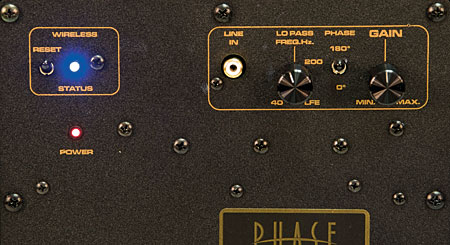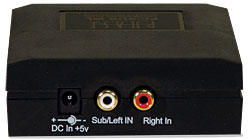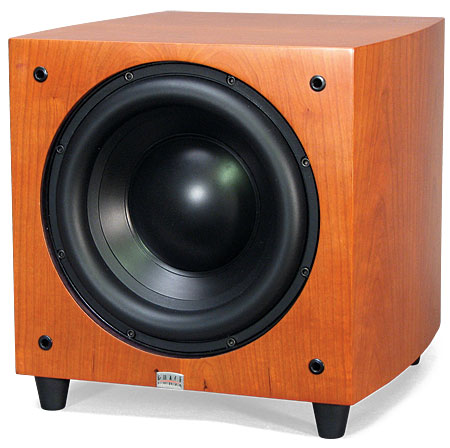Phase Technology PC-1.5 Speaker System Page 2
As you’d expect, phase is a recurring theme in the Phase Technology story. The company takes special pride in its “absolute phase crossover,” which ensures that the woofer and tweeter move both acoustically and electrically in phase—that is, in the same direction at the same time. According to the literature, this prevents nulls from forming among the front three speakers, so sounds will pan smoothly from side to side. The company says this also improves vertical dispersion, so the soundstage should remain the same whether you sit, slouch, or stand. In practice, I found the soundfield that the five PC-1.5s summoned to be enviably solid even as I took various positions on the sofa.

The WL12 subwoofer has a 12-inch bottom-firing driver coupled with a 12-inch front-firing passive radiator (in lieu of a port). During my listening sessions, the sub operated in both wired mode (because I was impatient to get started) and wireless mode. The latter required me to plug the sub cable into the transmitter and the transmitter into a power outlet. To pair the sub with its transmitter, I flipped a toggle on the back of the sub and used a pencil to press a tiny button on the bottom of the transmitter. The process took just a few seconds and worked on the first try. The two-way, 2.4-gigahertz, uncompressed streaming can operate at distances of up to 50 feet, according to the manual. For an additional sub, you’ll need an additional transmitter.
 Associated equipment included a Rotel RSX-1550 A/V receiver, OPPO BDP-83 universal disc player, Rega Planar 25 turntable, Shure M97xE cartridge, and Bellari VP530 tube phono preamp.
Associated equipment included a Rotel RSX-1550 A/V receiver, OPPO BDP-83 universal disc player, Rega Planar 25 turntable, Shure M97xE cartridge, and Bellari VP530 tube phono preamp.
A Familiar Voice
The Phase Technology personality I’ve come to expect immediately asserted itself. The midrange was smooth and natural. Highs were not exactly rolled off, but they weren’t accentuated in any way, either. Instead, they seemed to be an organic extension of the mids. That’s the way it should be.

The Twilight Saga: New Moon, in DTS-HD Master Audio, brought out the system’s versatility, for both good and ill. Perhaps the most noteworthy moment, my notes remind me, was the “dream rumble” that accompanies an early scene. Here, the satellites and sub combined to enhance a psychological insight in the story line. Eventually, the soundtrack was forced to follow the plot’s hackneyed predictability, with injections of cheap, harsh music, the clichéd phase shifting of vampire Edward’s spectral appearances, and the gutteral cries of Jacob’s pack of werewolves, which my notes said were “like a garbage disposal gone awry.” While the system was duty-bound to tell the truth, it did so with a high level of listening comfort. Despite the aggressive and often cheesy effects, my prolonged listening sessions were remarkably free of fatigue.
The lossless PCM soundtrack of Brooklyn’s Finest cruised along at a higher than normal 69 percent of my A/V receiver’s volume control’s range, illustrating a thirst for power in this story of an ethically challenged and tormented police detective. Despite the sudden blam that punctuates the opening scene, I never found the noisier action sequences hard to take. I didn’t touch the AVR remote’s volume keys after the first few minutes. In a church confessional scene accompanied by strings, the speakers summoned a gratifyingly lush and emotionally fulfilling tone.
- Log in or register to post comments


























































